Key takeaways:
- Understanding different microphone types (dynamic vs. condenser) and their specifications (sensitivity, frequency response) is crucial for achieving optimal sound quality in film production.
- Sound design enhances storytelling by creating immersion and emotional connections, emphasizing the significance of careful sound choices in filmmaking.
- Real-world testing of microphones in various environments is vital; factors like background noise and mic placement directly impact audio clarity and production value.
- Choosing appropriate microphones and monitoring equipment, along with awareness of acoustic environments, can prevent audio issues and improve overall sound quality in films.
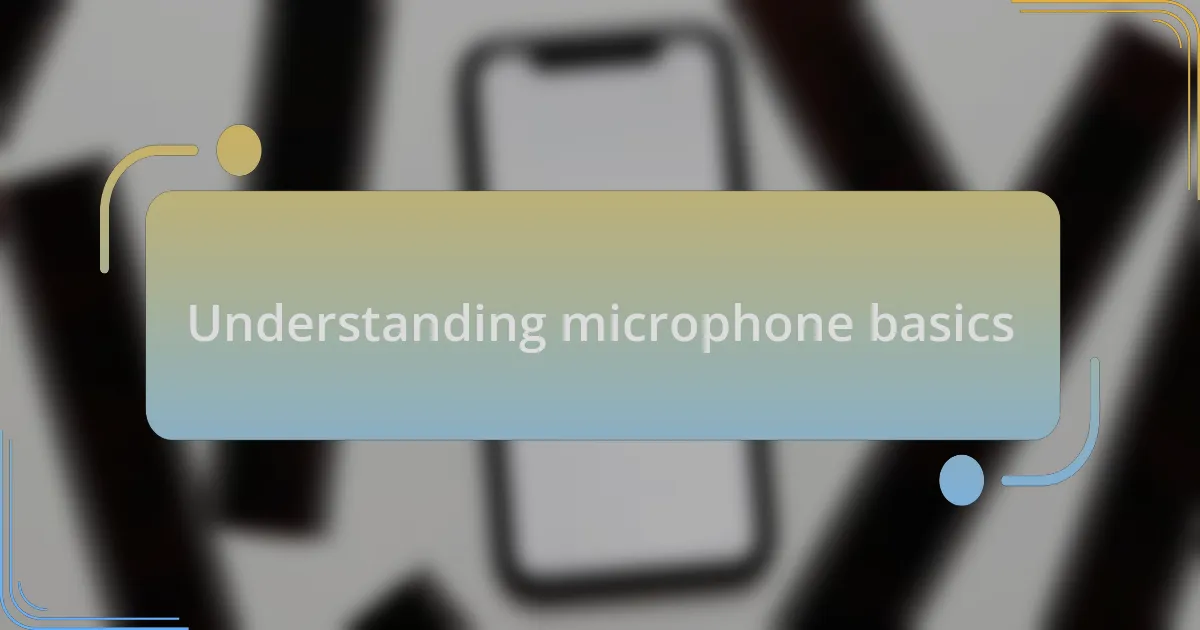
Understanding microphone basics
Microphones are fascinating devices that convert sound waves into electrical signals, allowing us to capture audio in various environments. I remember my first experience on a film set where we used a shotgun microphone. It was incredible to see how it efficiently picked up dialogue while minimizing background noise. How does something so small achieve such a significant impact on audio quality?
There are different types of microphones, such as dynamic and condenser, each suited for specific applications. For instance, I’ve found that dynamic mics are robust and perfect for live situations, while condenser mics excel in studio environments. Have you ever noticed how the sound quality can drastically change depending on the microphone used? It’s a clear reminder of the importance of choosing the right tool for the job.
Understanding microphone specifications like frequency response and sensitivity is crucial for film production. I recall a project where mismatching these specs led to frustrating audio issues during post-production. It made me realize how vital it is to pay attention to these details. When you start digging into these aspects, you uncover a world of difference in capturing the perfect sound.
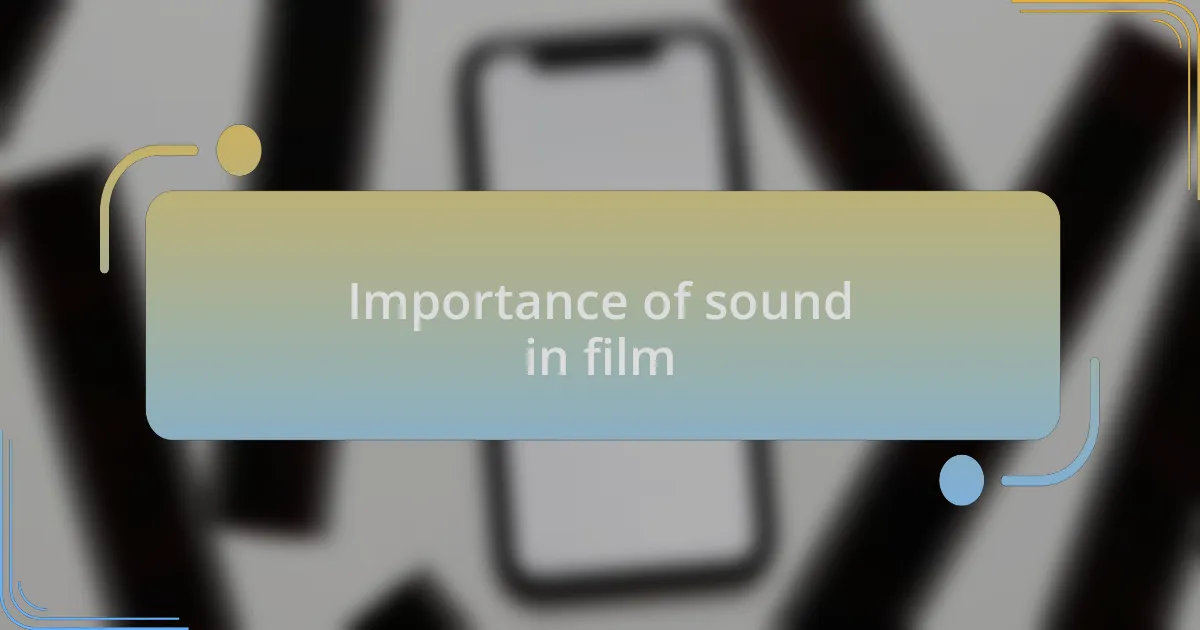
Importance of sound in film
Sound in film is often what breathes life into a scene. I vividly remember working on a short film where we captured a thunderstorm. The sound effects elevated the visuals, creating an immersive experience that drew the audience in completely. Can you imagine watching that scene without the crack of thunder? It would lose its intensity and emotional pull, highlighting how integral sound is to storytelling.
The subtle nuances of sound design can transform an ordinary film into something extraordinary. I once collaborated with a sound designer who meticulously layered ambient sounds to create a rich auditory landscape. This attention to detail not only enhanced the setting but also affected how viewers felt about the characters. Doesn’t it make you think about how sound shapes our emotional connection to what we see on screen?
Ultimately, sound guides the audience’s experience and interpretation of a film. In one project I worked on, the score was so impactful that it brought tears to the cast during a test screening. This moment reinforced my belief that sound isn’t just an accessory; it plays a critical role in conveying the film’s message. How do you feel when the right music swells in a poignant scene? It often resonates with parts of our own lives.
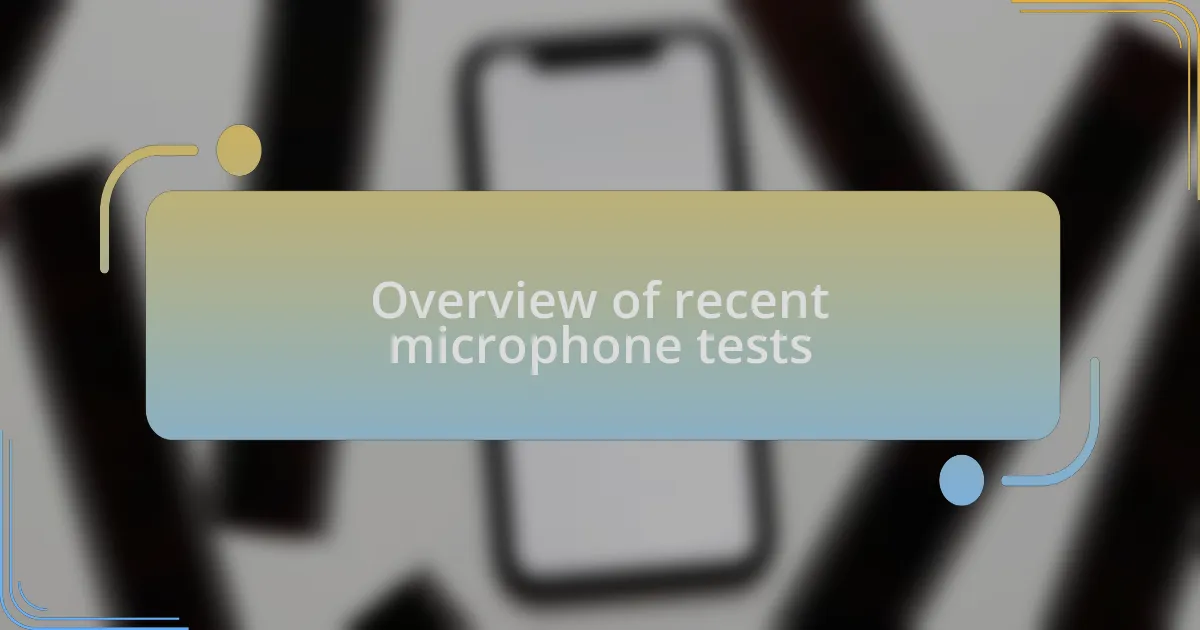
Overview of recent microphone tests
Recent microphone tests have provided valuable insights into sound capture technology, especially for filmmakers seeking the best audio quality. I recently participated in a project where we tested several microphones in different environments—outdoors, in a studio, and even in a busy café. Each setting revealed how specific microphone types, like shotgun versus lavalier, performed under varying conditions, which directly impacted our sound recording choices.
One standout test involved a high-end condenser mic, which I expected would deliver exceptional clarity. To my surprise, in the outdoor setting, it picked up not only the dialogue but also an overabundance of environmental noise—something I hadn’t anticipated. This experience pushed me to consider how microphone selection isn’t just about quality; it’s also about understanding the context in which you’ll be working. Have you ever recorded sound only to find that environmental factors played a larger role than you anticipated?
I also found that testing microphones led to deeper discussions among the crew about how sound complements or detracts from the visual narrative. For instance, using a dynamic mic for an intimate dialogue scene transformed our approach to capturing emotion. It made me reflect on how crucial these tests are; they shape not only our technical choices but also our creative vision. Don’t you think the right microphone can elevate a scene beyond our expectations?
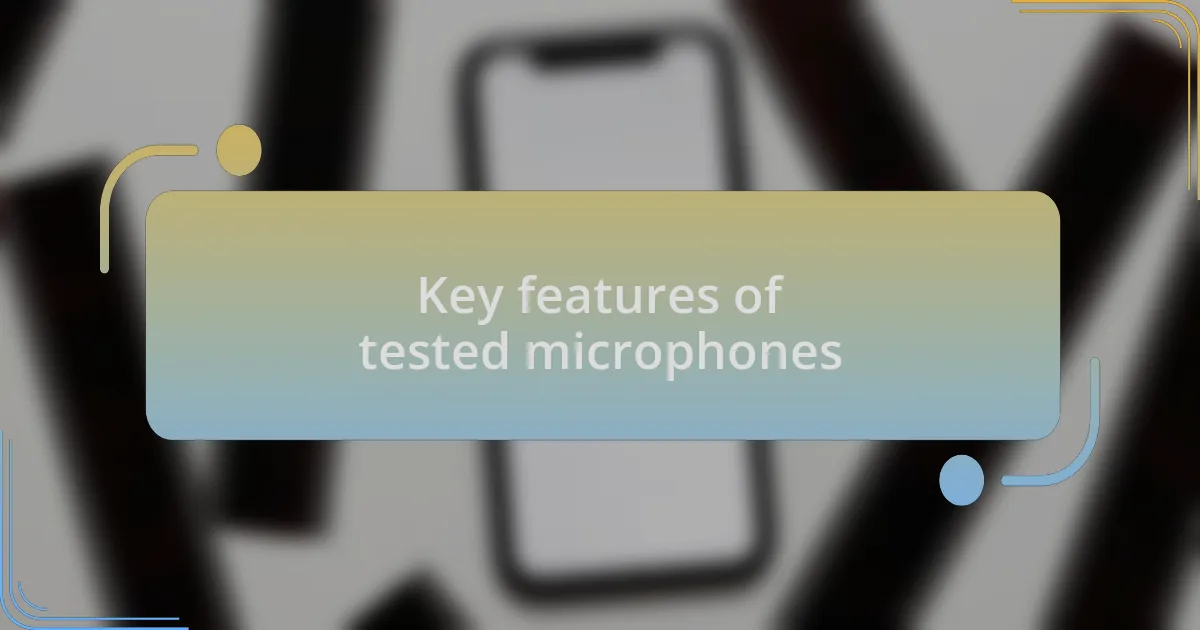
Key features of tested microphones
When testing microphones, one key feature that stood out to me was the sensitivity level. I remember using a shotgun mic on a documentary shoot. It was fascinating to observe how it isolated the subject’s voice amidst background noise, creating a focused sound that really drew the viewer in. Isn’t it interesting how the right sensitivity can transform raw audio into an engaging listening experience?
Another aspect I noticed was the polar pattern, which is crucial for determining how sound is captured. On one occasion, we compared a cardioid mic with its omnidirectional counterpart in a bustling café. The cardioid mic effectively rejected the surrounding chatter while capturing crisp dialogue. It made me realize how the choice of polar pattern could dictate not just technical quality, but also the overall mood and intimacy of a scene. Have you ever thought about how these decisions subtly shift the audience’s connection to the narrative?
Durability was also a major consideration during our tests. I had a close call when a lavalier mic I was using snagged on a chair during a take. Thankfully, it survived the fall and continued to perform flawlessly. Experiences like this underline the importance of reliable gear on set, especially when unexpected moments arise. Don’t you agree that having durable equipment isn’t just about longevity, but about peace of mind while shooting?

Lessons learned from microphone tests
Testing microphones has taught me the immense value of understanding how environmental factors affect audio quality. I recall a project where we shot outdoors on a windy day. I initially used a standard handheld mic, and the wind interference was frustrating. Switching to a windscreen-equipped shotgun mic drastically improved our audio clarity. Have you experienced that frustration of bad audio, only to find the right tool makes all the difference?
Another lesson learned emphasizes the impact of mic placement. During a recent scene, I decided to experiment with a lavalier mic positioned differently—closer to the actor’s mouth. The result was night and day! The intimacy of the dialogue intensified, creating a stronger emotional connection with the audience. It made me wonder: how often do we overlook the simplest adjustments that can elevate the overall production value?
Lastly, the importance of testing audio gear in real shooting scenarios cannot be overstated. I remember a time when I conducted a sound check in an empty room, expecting flawless results. Yet, during the actual shoot with a live audience, the dynamics completely shifted. It highlighted for me that thorough preparation involves not just the gear, but also the environment. Isn’t it fascinating how real-world factors can surprise even the most seasoned filmmakers?
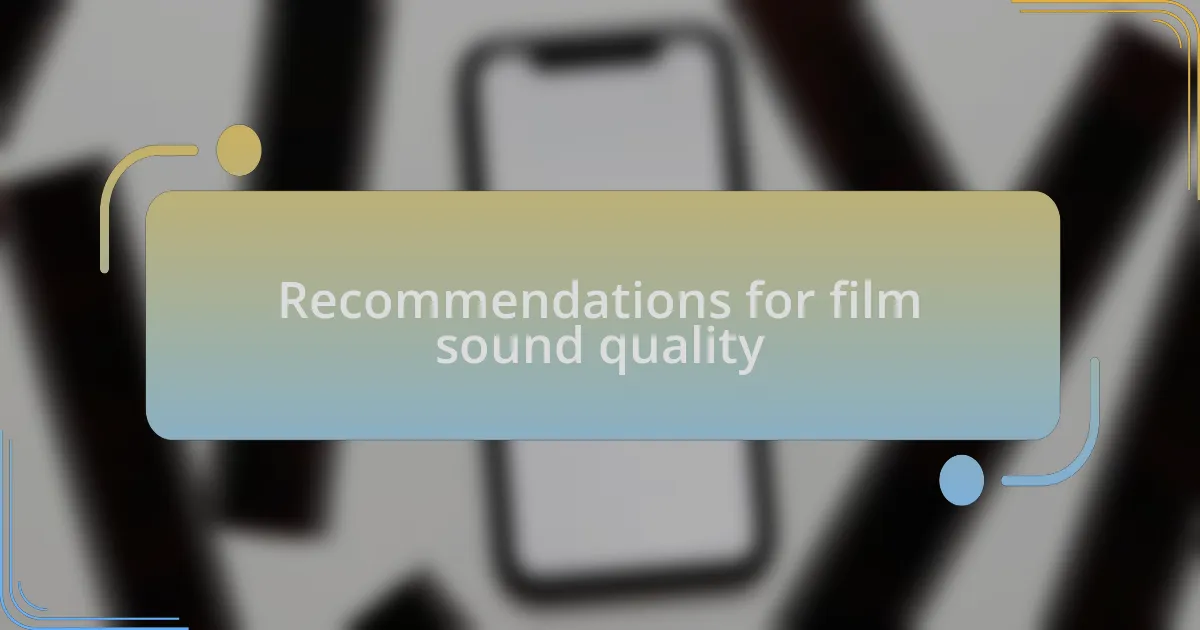
Recommendations for film sound quality
Choosing the right microphone is paramount for achieving excellent sound quality in film. I remember a project where I opted for a condenser mic for indoor dialogue, thinking it would capture every nuance. However, the ambient noise from the heating system bled into the audio, ruining several takes. Have you faced a moment when the mic choice made you rethink your entire sound strategy?
Beyond the mic itself, understanding acoustic environments can dramatically influence your sound quality. On one particular shoot, we recorded in a small, echo-prone space, believing we could clean it up in post. The reality hit when we listened to the playback; no amount of editing could fully compensate for the sound reflections. It reminded me of the importance of selecting locations with sound control in mind—after all, the best dialogue deserves clear sound.
Moreover, incorporating high-quality audio monitoring gear during filming is essential. I once underestimated my headphones during a shoot, thinking the built-in audio would suffice. But when I listened through studio monitors later, I realized I’d missed critical audio cues. I’ve learned that having dedicated monitoring can prevent these missteps, ensuring that what we capture aligns with our creative vision. Have you considered your monitoring strategy lately?